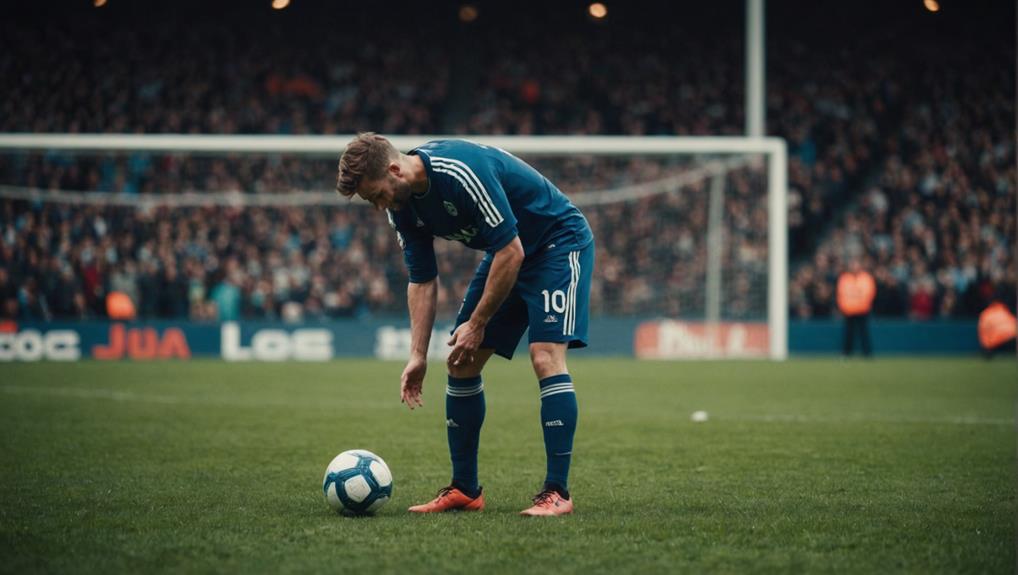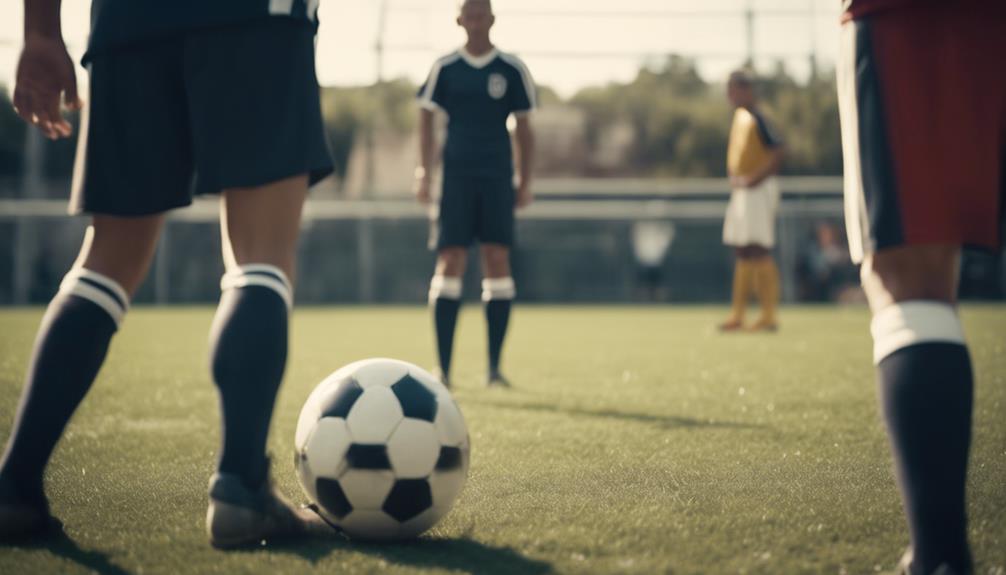
Understanding Throw-In Rules in Soccer
July 30, 2024To understand throw-in rules in soccer, remember that opponents get possession when the ball goes over the touchline. Make sure the ball completely crosses to award a throw-in. Players need both feet behind the line before throwing, releasing it over the head. Opponents must be 2 yards away. Violations can lead to penalties, like turnover if touched before others. Know that handball can result in free kicks. Players must respect the distance to prevent unsporting behavior. Following the rules strategically places your team for success on the field.
Awarding a Throw-in
When awarding a throw-in in soccer, the opponents of the player who last touched the ball over the touchline are granted possession. This rule ensures fairness and gives the opposing team a chance to gain control of the ball.
It's essential that the ball completely crosses the touchline for a throw-in to be awarded. The specific guidelines regarding throw-ins dictate that the team who didn't touch the ball last should benefit from the throw-in situation.
Different outcomes may occur based on where the ball enters the field during a throw-in. While no direct goals can be scored from a throw-in, specific consequences apply if the ball enters the goal directly without being touched by another player.
Understanding the nuances of throw-in rules can give your team an advantage in gaining possession and controlling the flow of the game. By following the regulations surrounding throw-ins, you can strategically position your team for success in soccer matches.
Throw-in Procedure
To execute a throw-in in soccer, you must make certain that both feet are on or behind the touchline before throwing the ball over your head.
The thrower needs to have both hands on the ball and must release it from behind and over their head while facing the field.
Opponents must keep a distance of at least 2 yards from the point of the throw-in.
Once the ball is thrown and enters the field, it's considered in play. Remember, the ball must be thrown from behind the touchline to be valid.
By following these procedures, you ensure a fair and proper throw-in according to the rules of soccer.
Keep in mind the importance of positioning your feet correctly, using both hands to throw, maintaining the required distance from opponents, and releasing the ball over your head for a successful throw-in.
Offences and Sanctions

Players committing infractions during a throw-in risk facing penalties and sanctions in soccer. One common offence is touching the ball again before another player does after a throw-in, which results in a turnover to the opposing team.
Handball during a throw-in leads to different types of free kicks, depending on the situation. If a player impedes the thrower, they risk receiving a caution and granting the opposing team an indirect free kick.
To maintain fair play, clear rules dictate how players can handle the ball after a throw-in. It's vital for players to understand that various throw-in related offences have specific consequences, ensuring that the game is played according to the rules.
Handling Violations
Touching the ball again before another player in a throw-in can result in an indirect free kick, highlighting the significance of adhering to handling violations in soccer.
When it comes to throw-ins, understanding the rules surrounding handling violations is important to avoid penalties. Here are key points to keep in mind:
- Indirect Free Kick: Touching the ball again before another player leads to an indirect free kick for the opposing team, underscoring the need for proper execution during a throw-in.
- Direct Free Kick or Penalty Kick: Handball offences during a throw-in can result in a direct free kick or even a penalty kick, showing the seriousness of violating handling rules.
- Impeding the Thrower: Impeding the thrower can result in a caution for unsporting behavior and an indirect free kick, highlighting the importance of fair play and sportsmanship.
- Defending Team Goalkeepers: Defending team goalkeepers have specific rules to follow regarding handling the ball after a throw-in, ensuring a level playing field for both teams.
Understanding and following these handling violation rules during throw-ins are essential to maintain fairness and sportsmanship in soccer games.
Opponent Interference

Opponent interference during a throw-in can lead to disciplinary actions and indirect free kicks, emphasizing the need for fair play and adherence to established guidelines in soccer matches.
Soccer regulations mandate that opponents must stay at least 2 yards away from the throw-in spot. Failure to maintain this distance can result in cautions for unsporting behavior. Additionally, deliberately impeding the thrower's ability to take the throw-in may lead to further disciplinary actions.
The rules surrounding throw-ins are designed to prevent unfair distractions or impediments by opponents, ensuring a level playing field for all teams involved. It's pivotal for players to respect these throw-in guidelines to uphold the integrity of the game and promote sportsmanship.
Conclusion
Now that you understand the ins and outs of throw-in rules in soccer, you'll be able to navigate this aspect of the game with ease.
Remember, practice makes perfect, so get out there and hone your skills.
The ball is in your court, so make sure to follow the rules to avoid any penalties.
Before you know it, you'll be throwing in like a seasoned pro.


